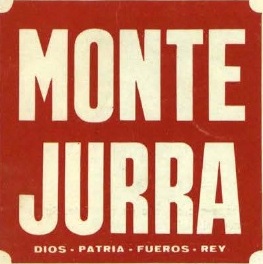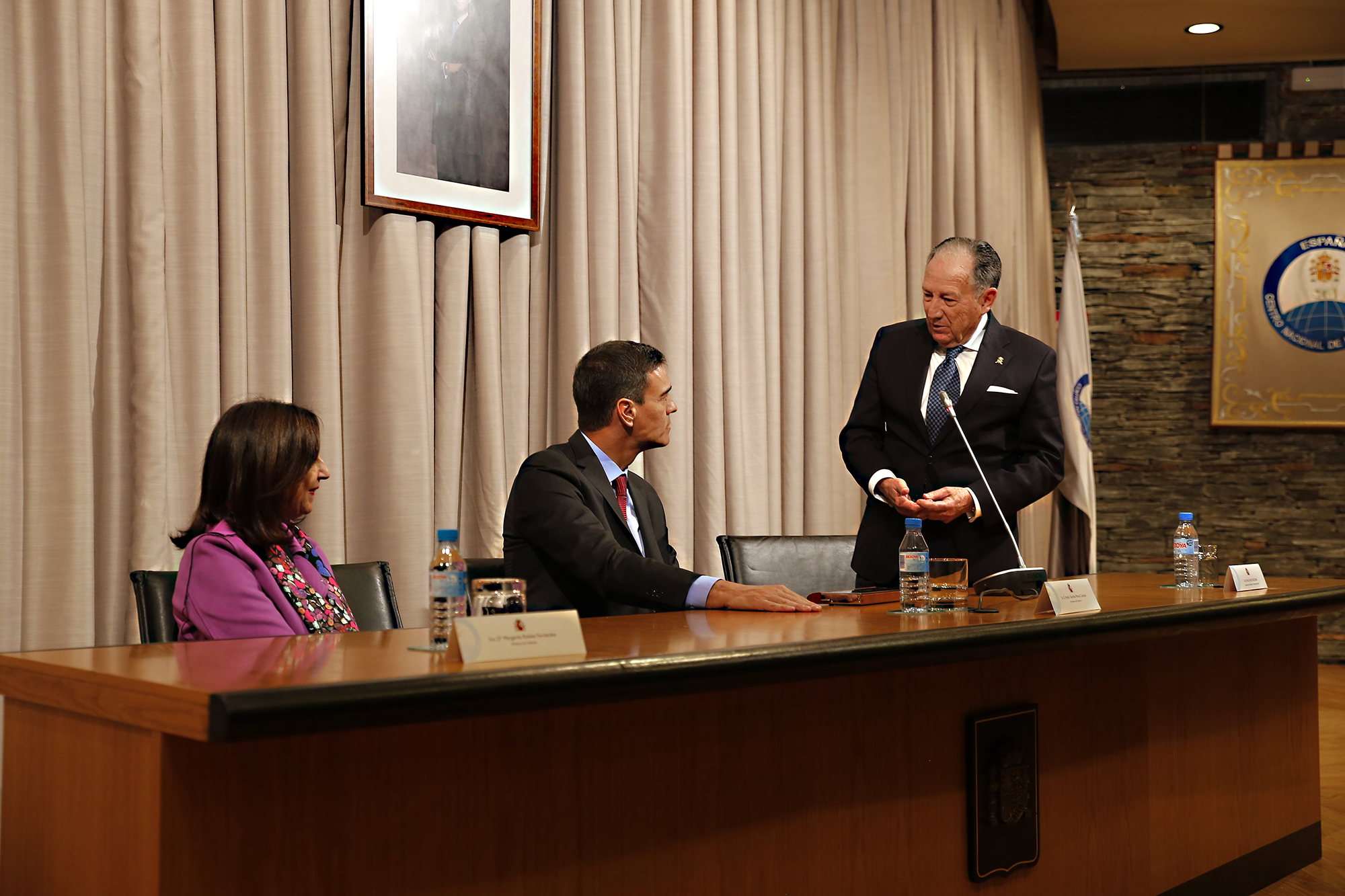|
Montejurra
Montejurra in Spanish and Jurramendi in Basque are the names of a mountain in Navarre region (Spain). Each year, it hosts a Carlist celebration in remembrance of the 1873 Battle of Montejurra during the Third Carlist War. In 2004, approximately 1,000 persons turned out. Between 1960 and 1971 the Carlists were publishing a monthly magazine named ''Montejurra''. On 9 May 1976 during the Spanish Transition, far right-wing gunmen supported by the Spanish secret services, killed two people at the Carlist Party The Carlist Party ( es, Partido Carlista, ca, Partit Carlí, eu, Karlista Alderdia, gl, Partido Carlista, ast, Partíu Carlista; PC) is a Spanish political party that considers itself as a successor to the historical tradition of Carlism. T ... celebration at a time when it was drifting toward left-leaning positions. This became known as the Montejurra Incidents. External links Montejurra Events Mountains of Navarre Carlism {{Navarre-geo-stub ... [...More Info...] [...Related Items...] OR: [Wikipedia] [Google] [Baidu] |
Montejurra (magazine)
''Montejurra'' was a Spanish monthly magazine, published between 1960 and 1971. Based in Pamplona it was distributed mostly in Navarre and Northern Spain, though pre-paid copies sent by mail reached recipients in the entire country. Its circulation is not clear; at one point the editors hoped to have 20,000 subscribers. The monthly was formatted as a political magazine and evolved from a 4-page text-only bulletin to a 44-page partially color illustrated review; altogether there were 106 issues published. Politically ''Montejurra'' was clearly identified as a Carlist periodical. Its launch was related to Carlism adopting a conciliatory position towards Francoism; following first ambiguous and then increasingly critical stand, since the mid-1960s the monthly suffered from censorship interventions, eventually to be forcibly closed by administration. ''Montejurra's'' editorial board was dominated by members of the Progressist faction and the monthly proved vital in their bid for control ... [...More Info...] [...Related Items...] OR: [Wikipedia] [Google] [Baidu] |
Montejurra Incidents
The Montejurra incidents, was a neo-fascist terrorist attack that took place on May 9, 1976, when two Carlist members were killed and another three seriously wounded by right-wing gunmen at the annual Carlist Party celebration that was held in Montejurra, Navarre, Spain. The incidents The Carlists, a counter-revolutionary monarchist movement that joined the alliance of Nationalists supporting Franco in the Spanish Civil War (1936-1939), had split between its more traditional, counter-revolutionary, Ancien Régime, Catholic, anti-capitalistic, anti-socialistic, pro-legitimate monarchist adherents and the new confederal, socialist, autogestionary movement with similarities to Titoist ideology. The new 'Titoist' half of the movement was the target of a violent incident organized by Franco's supporters, informally known as the ''bunker'', who still controlled the State apparatus. Ricardo García Pellejero and Aniano Jiménez Santo, two supporters of Carlist pretender Carlos-Hugo ... [...More Info...] [...Related Items...] OR: [Wikipedia] [Google] [Baidu] |
Third Carlist War
The Third Carlist War ( es, Tercera Guerra Carlista) (1872–1876) was the last Carlist War in Spain. It is sometimes referred to as the "Second Carlist War", as the earlier "Second" War (1847–1849) was smaller in scale and relatively trivial in political consequence. Leading up to the war, Queen Isabella II abdicated the throne in 1868, and the unpopular Amadeo I, son of the King of Italy, was proclaimed King of Spain in 1870. In response, the Carlist pretender, Carlos VII, tried to earn the support of various Spanish regions by promising to reintroduce various area-specific customs and laws. The Carlists proclaimed the restoration of Catalan, Valencian and Aragonese fueros (charters) which had been abolished at the beginning of the 18th century by King Philip V in his unilateral Nueva Planta decrees. The call for rebellion made by the Carlists was echoed in Catalonia and especially in the Basque region (Gipuzkoa, Álava, Biscay and Navarre), where the Carlists managed to de ... [...More Info...] [...Related Items...] OR: [Wikipedia] [Google] [Baidu] |
Carlist Party (1970)
The Carlist Party ( es, Partido Carlista, ca, Partit Carlí, eu, Karlista Alderdia, gl, Partido Carlista, ast, Partíu Carlista; PC) is a Spanish political party that considers itself as a successor to the historical tradition of Carlism. The party was founded in 1970, although it remained illegal until 1977 following the death of the caudillo Francisco Franco and the democratisation of Spain. Since 2000, the general secretary of the party has been Evaristo Olcina and its official publication since is ''El Federal''. It has a political line of the alternative left, workers' self-management and confederalism. It annually organises the acts of Montejurra. The Carlist Party holds a federal structure with the possibility of it forming sovereign Carlist parties in the associate nationalities in the Carlist Party. The youths of the different Carlist parties and Carlist groups group together in the Carlist Youths. The party is known as the left-wing of the Carlist movement since ... [...More Info...] [...Related Items...] OR: [Wikipedia] [Google] [Baidu] |
Navarre
Navarre (; es, Navarra ; eu, Nafarroa ), officially the Chartered Community of Navarre ( es, Comunidad Foral de Navarra, links=no ; eu, Nafarroako Foru Komunitatea, links=no ), is a foral autonomous community and province in northern Spain, bordering the Basque Autonomous Community, La Rioja, and Aragon in Spain and Nouvelle-Aquitaine in France. The capital city is Pamplona ( eu, Iruña). The present-day province makes up the majority of the territory of the medieval Kingdom of Navarre, a long-standing Pyrenean kingdom that occupied lands on both sides of the western Pyrenees, with its northernmost part, Lower Navarre, located in the southwest corner of France. Navarre is in the transition zone between Green Spain and semi-arid interior areas, and thus its landscapes vary widely across the region. Being in a transition zone also produces a highly variable climate, with summers that are a mix of cooler spells and heat waves, and winters that are mild for the latitude. Navarr ... [...More Info...] [...Related Items...] OR: [Wikipedia] [Google] [Baidu] |
Carlism
Carlism ( eu, Karlismo; ca, Carlisme; ; ) is a Traditionalist and Legitimist political movement in Spain aimed at establishing an alternative branch of the Bourbon dynasty – one descended from Don Carlos, Count of Molina (1788–1855) – on the Spanish throne. The movement was founded in consequence of a dispute over the succession laws and widespread dissatisfaction with the Alfonsine line of the House of Bourbon. It was at its strongest in the 1830s but experienced a revival following Spain's defeat in the Spanish–American War in 1898, when Spain lost its last remaining significant overseas territories of the Philippines, Cuba, Guam, and Puerto Rico to the United States. Carlism was a significant force in Spanish politics from 1833 until the end of the Francoist regime in 1975. In this capacity, it was the cause of the Carlist Wars of the 19th century and an important factor in the Spanish Civil War in the 1930s. Today, Carlists are a minor party. Origins The ... [...More Info...] [...Related Items...] OR: [Wikipedia] [Google] [Baidu] |
Monastery Of Irache
Santa María la Real de Irache (also Hyrache, or, in Basque, Iratxe) is a former Benedictine monastery located in the town of Ayegui, Navarre, Spain. It dates from the eighth century, although the surviving buildings are later. Adjacent to the monastery is a winery called Bodegas Irache, which continues a tradition of viticulture which dates from monastic times. History The monastery is first attested on a 958 document, and also cited in a donation done by King Sancho I Garces (10th century). The monastery became a landmark as a hospital for pilgrims en route to Santiago in the Way of Saint James. In 1813, the monastery provided medical cares for the anti-Napoleonic parties, like the one led by Francisco Espoz y Mina. Likewise, during the Third Carlist War (1872-1876), the Carlists defeated in the Battle of Montejurra retreated to Irache in order to get care for their injured soldiers. Irache bore also witness to a decisive conspirational meeting on 15 June 1936 between the ... [...More Info...] [...Related Items...] OR: [Wikipedia] [Google] [Baidu] |
Spain
, image_flag = Bandera de España.svg , image_coat = Escudo de España (mazonado).svg , national_motto = ''Plus ultra'' (Latin)(English: "Further Beyond") , national_anthem = (English: "Royal March") , image_map = , map_caption = , image_map2 = , capital = Madrid , coordinates = , largest_city = Madrid , languages_type = Official language , languages = Spanish language, Spanish , ethnic_groups = , ethnic_groups_year = , ethnic_groups_ref = , religion = , religion_ref = , religion_year = 2020 , demonym = , government_type = Unitary state, Unitary Parliamentary system, parliamentary constitutional monarchy , leader_title1 = Monarchy of Spain, Monarch , leader_name1 = Felipe VI , leader_title2 = Prime Minister of Spain ... [...More Info...] [...Related Items...] OR: [Wikipedia] [Google] [Baidu] |
Battle Of Montejurra
A battle is an occurrence of combat in warfare between opposing military units of any number or size. A war usually consists of multiple battles. In general, a battle is a military engagement that is well defined in duration, area, and force commitment. An engagement with only limited commitment between the forces and without decisive results is sometimes called a skirmish. The word "battle" can also be used infrequently to refer to an entire operational campaign, although this usage greatly diverges from its conventional or customary meaning. Generally, the word "battle" is used for such campaigns if referring to a protracted combat encounter in which either one or both of the combatants had the same methods, resources, and strategic objectives throughout the encounter. Some prominent examples of this would be the Battle of the Atlantic, Battle of Britain, and Battle of Stalingrad, all in World War II. Wars and military campaigns are guided by military strategy, whereas bat ... [...More Info...] [...Related Items...] OR: [Wikipedia] [Google] [Baidu] |
Spanish Transition
Spanish might refer to: * Items from or related to Spain: **Spaniards are a nation and ethnic group indigenous to Spain **Spanish language, spoken in Spain and many Latin American countries **Spanish cuisine Other places * Spanish, Ontario, Canada * Spanish River (other), the name of several rivers * Spanish Town, Jamaica Other uses * John J. Spanish (1922–2019), American politician * "Spanish" (song), a single by Craig David, 2003 See also * * * Español (other) * Spain (other) * España (other) * Espanola (other) * Hispania, the Roman and Greek name for the Iberian Peninsula * Hispanic, the people, nations, and cultures that have a historical link to Spain * Hispanic (other) * Hispanism * Spain (other) * National and regional identity in Spain * Culture of Spain * Spanish Fort (other) Spanish Fort or Old Spanish Fort may refer to: United States * Spanish Fort, Alabama, a city * Spanish Fort (Color ... [...More Info...] [...Related Items...] OR: [Wikipedia] [Google] [Baidu] |
Spanish Secret Service
The National Intelligence Centre ( es, Centro Nacional de Inteligencia, CNI) is the Spanish official intelligence agency, acting as both its foreign and domestic intelligence agency. Its headquarters are located next to the A-6 motorway near Madrid. The CNI is the successor of the Centro Superior de Información de la Defensa, the Higher Centre for Defence Intelligence. Its main target areas are North Africa and South America and it operates in more than 80 countries. CNI's official budget for 2021 is approximately 300 million euros (the CNI can get further resources from the classified funds). The Secretary of State-Director of the CNI is currently Esperanza Casteleiro. Goals and operation The centre's essential goal is to provide the Spanish Government all the necessary information to prevent and avoid any risk or menace that affects the independence or integrity of Spain, its national interests, institutions and rule of law. In the same way, the law states that the spe ... [...More Info...] [...Related Items...] OR: [Wikipedia] [Google] [Baidu] |





